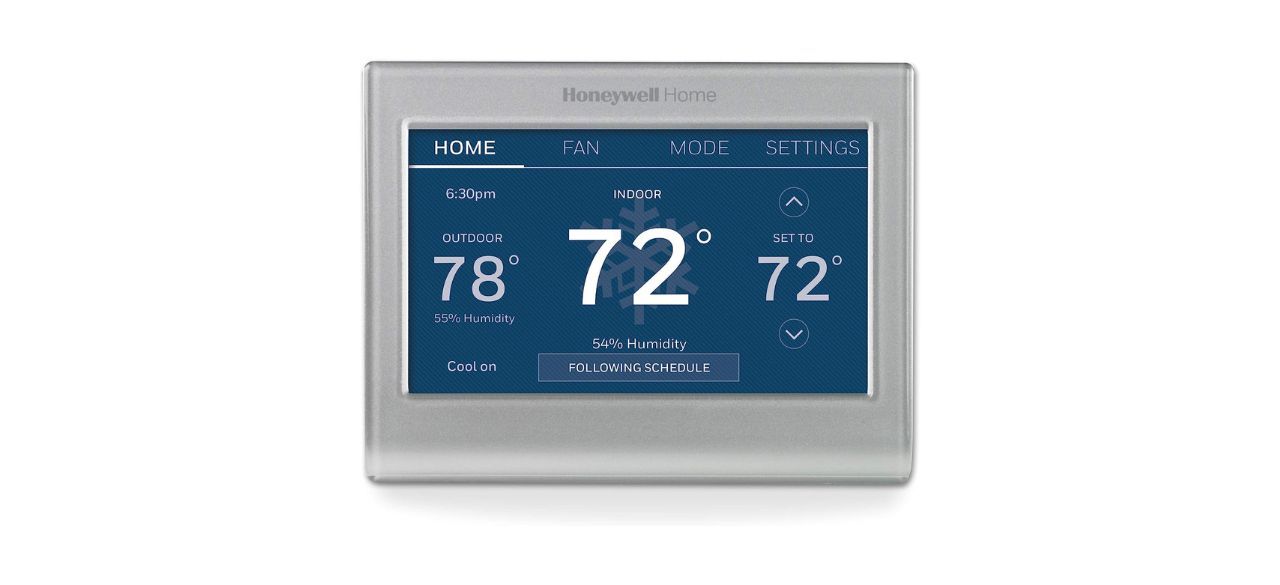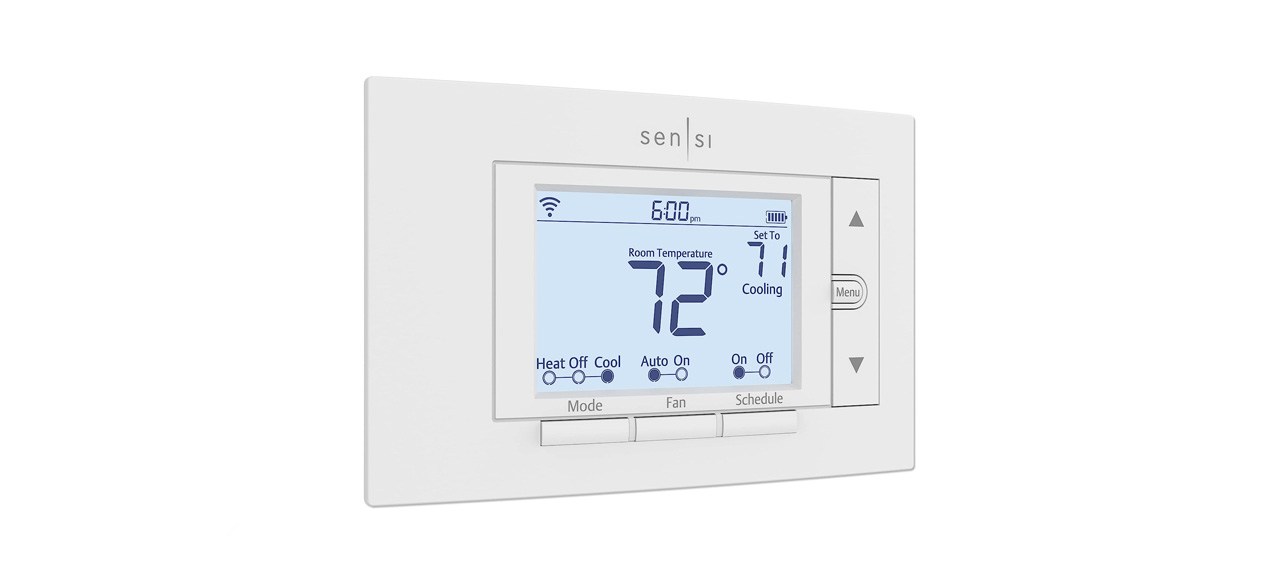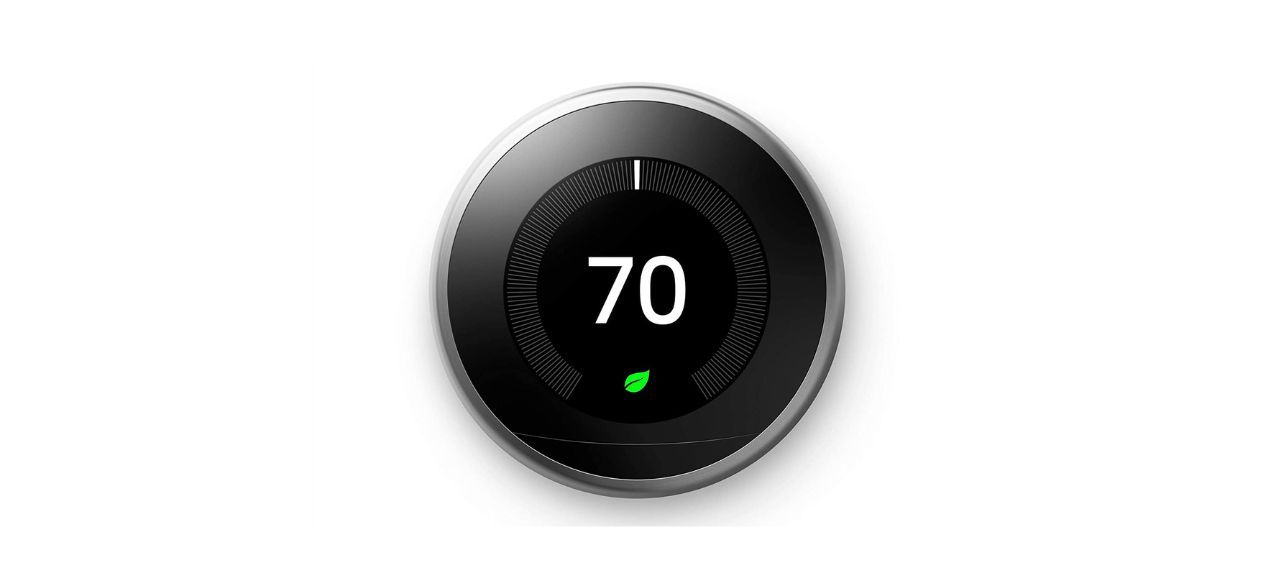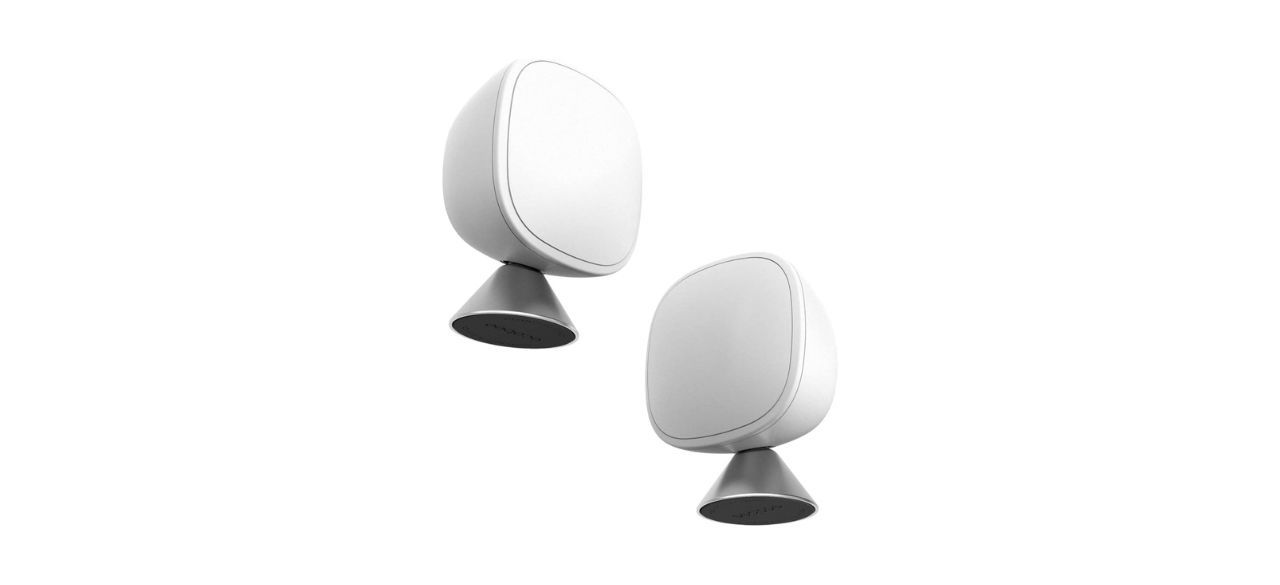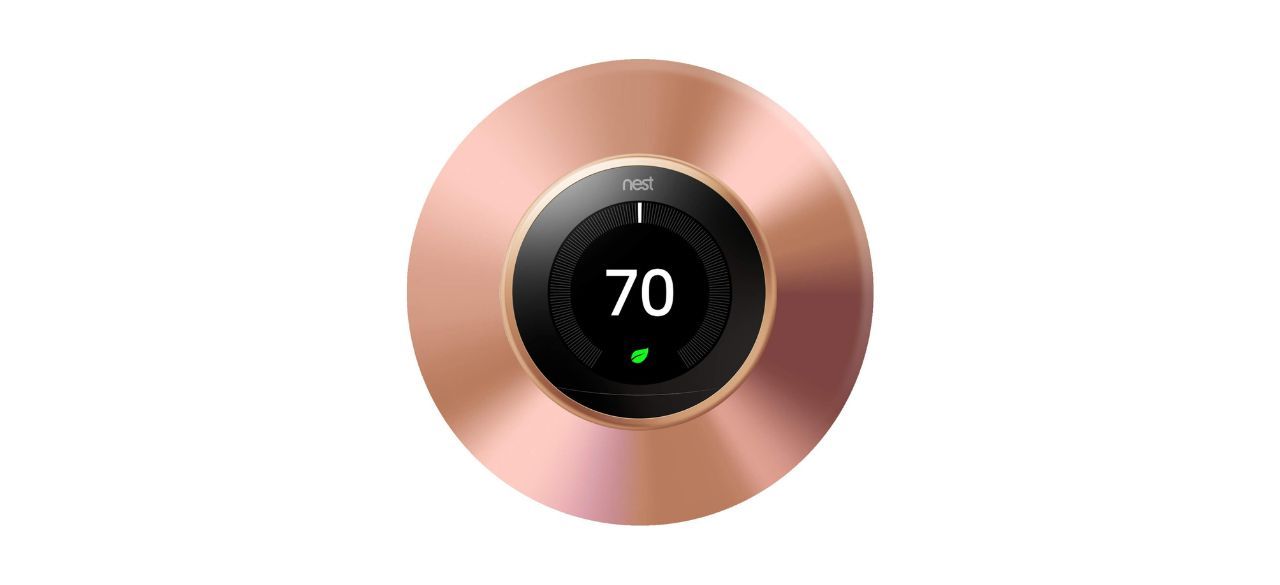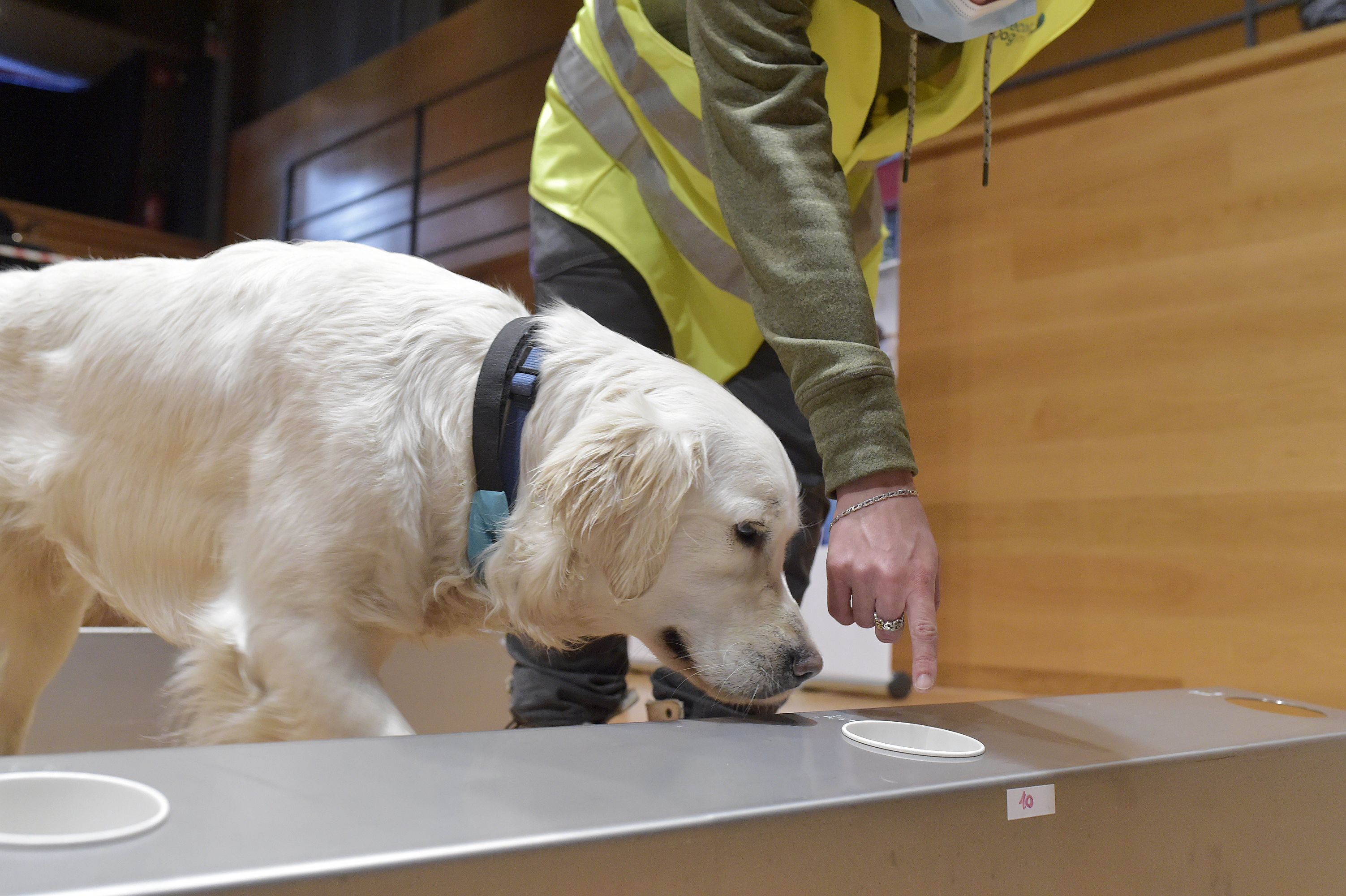Smart thermostats
Smart thermostats save you time, money and energy by creating heating and cooling schedules and monitoring your usage. You can even make adjustments from your phone. But these aren’t the only features of smart thermostats.
Shop this article: Honeywell Home Wi-Fi Thermostat, Ecobee SmartSensor Two-Pack and Nest Thermostat Wall Plate
How does a smart thermostat work?
Smart thermostats use Wi-Fi connectivity to connect to your smart home network. They can also connect to your smartphone, laptop, tablet or smartwatch. This lets you use those devices to monitor, make adjustments to and set schedules for the temperature in your home. This is usually through a smart thermostat’s companion app. They can also adjust temperatures with algorithms that track your routines, lifestyle and the weather.
For example, a smart thermostat can learn that you come home at 5 p.m. every day. It can then adjust your heating, ventilation and air conditioning system to ensure your home is at a comfortable temperature when you arrive. Some smart thermostats can also turn off your heat or AC when you depart each day.
How can a smart thermostat save me money?
Some manufacturers claim their smart thermostats can save you up to 25% on utility bills. This is partly accomplished by improving your heating, ventilation and AC system’s performance and reducing energy consumption. Another way is by letting you monitor and make adjustments to temperature settings remotely. If you forget to turn off your heat before leaving, for example, you could use your smart thermostat’s companion app to turn it off without returning. Being able to set schedules and take advantage of algorithmic learning also helps.
Many smart thermostats, such as the Nest Learning Thermostat or Honeywell Home Wi-Fi Thermostat, also generate reports on energy usage and heating and cooling patterns. By reviewing your usage data you can make informed decisions about how you consume energy.
What do I need to consider when choosing a smart thermostat?
Existing heating, ventilation and AC system
The smart thermostat you buy must be compatible with your home’s existing heating, ventilation and AC system. Many popular smart thermostat models include compatibility checkers on their websites. Smart thermostats also often require a C-wire, enabling the continuous flow of power to the thermostat. This is necessary for features like Wi-Fi connectivity and touch screens. Some thermostat ports aren’t equipped with C-wires because many older thermostats don’t need them.
If you don’t have a C-wire, you can hire an electrician to install one. You can also choose a smart thermostat designed to work without a C-wire, such as the Emerson Sensi. Alternatively, you can buy a C-wire adapter to install near your heating, ventilation and AC system’s control board.
Compatibility with your existing smart home system
If you already have smart home devices, select a smart thermostat that is compatible with your system. If you use Apple HomeKit, for example, select a model you can control from the platform such as the Carrier Cor or the Hive. For an IFTTT smart home system, consider the Google Nest Learning Thermostat.
What you need to buy to go with your smart thermostat
These sensors work with the Ecobee Smart Thermostat to detect motion to adjust the temperature in rooms that are in use.
Sold by Amazon
Match your Nest Thermostat to the other design elements of your living space. Wall plates come in a variety of colors including white, silver, black and bronze.
Sold by Amazon
Want to shop the best products at the best prices? Check out Daily Deals from BestReviews.
Sign up here to receive the BestReviews weekly newsletter for useful advice on new products and noteworthy deals.
Evelyn Waugh writes for BestReviews. BestReviews has helped millions of consumers simplify their purchasing decisions, saving them time and money.
Copyright 2023 BestReviews, a Nexstar company. All rights reserved.


